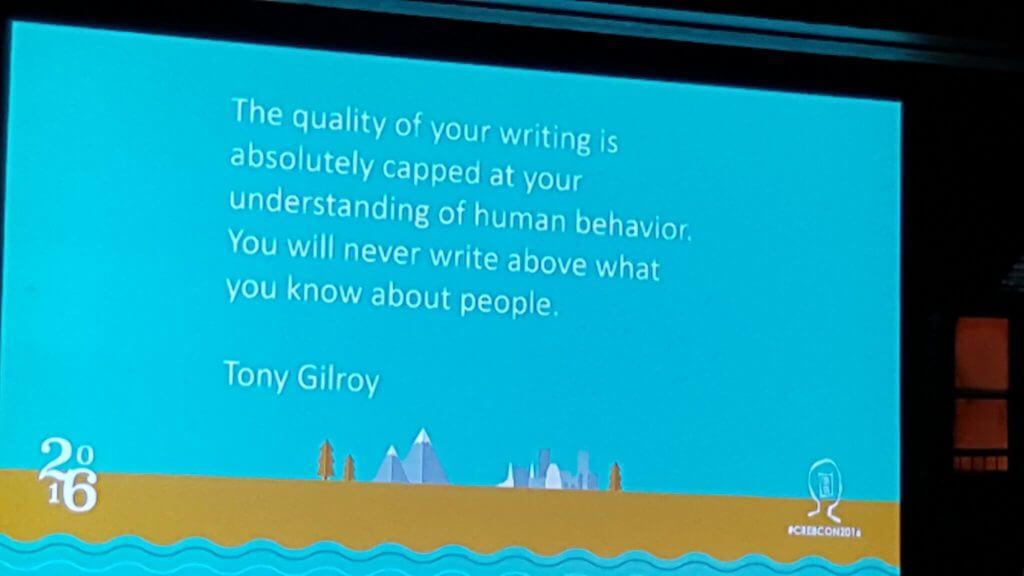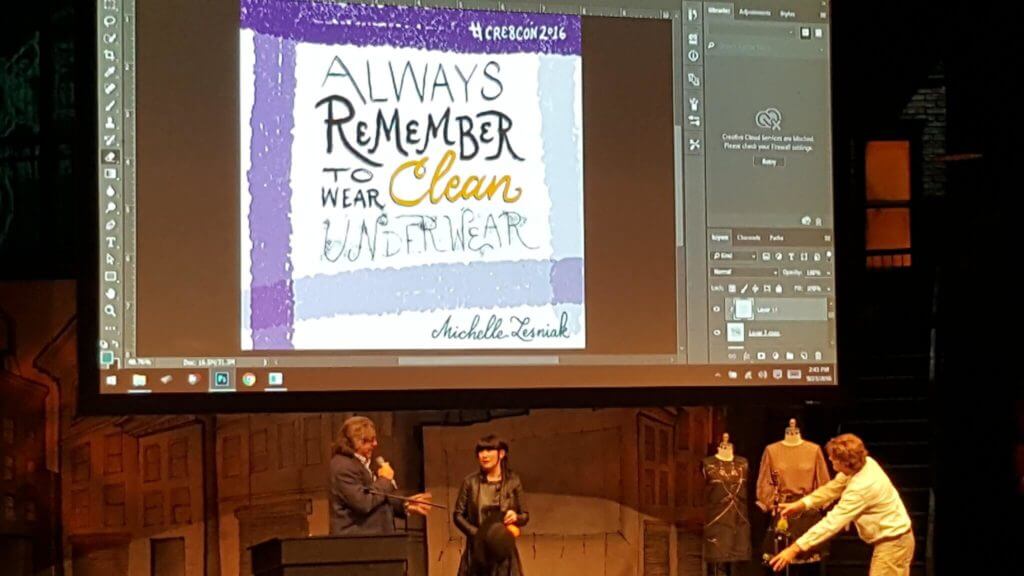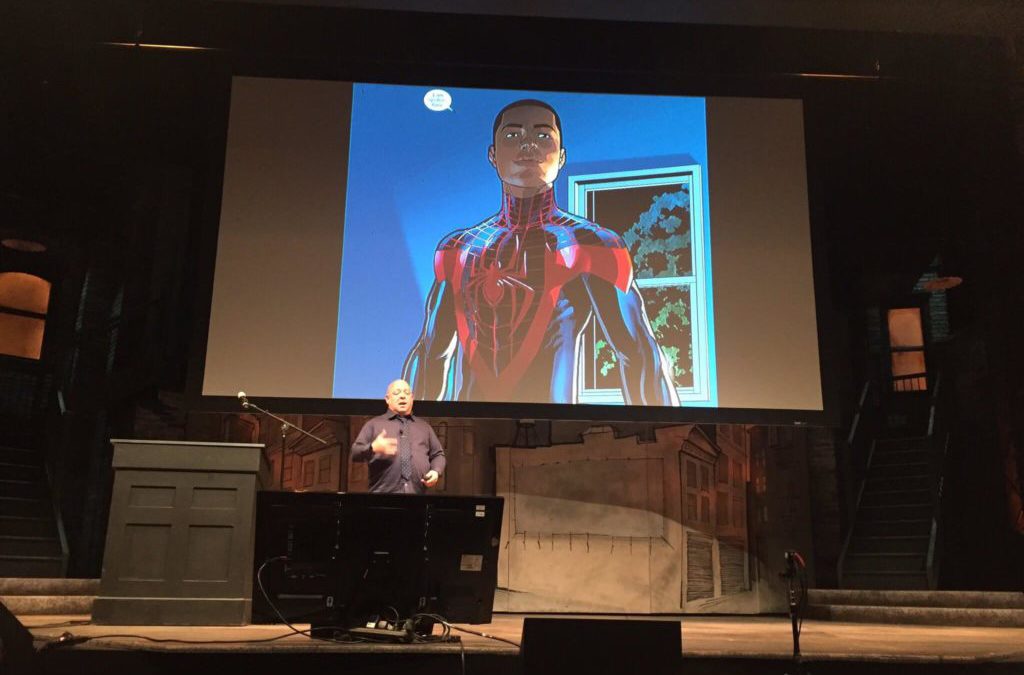Entrepreneurs could learn from the artistic community’s reliance on a dirty two letter word.
Last week I was privileged to attend the Portland Creative Conference at the Gerding Theater. Artists of all kinds offered inspiration to an audience comprised of budding and established artists, agency executives, in-house marketing teams and leaders within the Pacific Northwest arts scene. Screen writers, documentary producers, comedians and fashion designers vulnerably delved into past mistakes — coming full circle into how they overcame these heartbreaks to develop a stronger artistic self, whether “success” was part of the mixture or not.
What surprised me the most was my reaction to the discussions. I had no idea art could be so closely related to entrepreneurialism. Since at times I consider myself a fledgling writer (who doesn’t?), I expected to identify from a writer’s point-of-view — inspired to give it all up to burrow myself into my first novel.
Instead I found my entrepreneurial spirit reawakened with each speaker’s gusto. This could be a sign that my headspace just happens to be filled with new business ventures, but I think its more than that. Entrepreneurialism permeates everything. It’s a motivating mindset whether you’re employed or striving to make it on your own, which couldn’t be more true in the artistic realm. Artists must have a bold entrepreneurial sense in order to stay true to their art, presenting their medium in the purest form, as they desire it to be consumed by the world.
An important theme ran through the discussions, whether the presenter was employed in the traditional sense or not. Each presenter acted as their own boss, going to great lengths to see their original visions carried out, daring to believe in themselves and their artistic point-of-view. This most notably involved using the word “no” on a consistent basis.
Below you’ll discover the NO theme within the top insights garnered from some presentations. Relate this back to either your day job or your budding new business venture.
“Art is about being creatively maladjusted,”
With Donald Trump highlighting Chicago’s violence during the recent presidential debate, there couldn’t be a more poignant time to discuss Kevin Willmott’s work on “Chi-Raq,’ a movie he co-wrote with Spike Lee staring Jennifer Hudson, Angela Bassett, Samuel L. Jackson, John Cusack, Nick Cannon, Teyonah Parris and Wesley Snipes. The satire, which was released in 2015, spotlights frustrated girlfriends and wives of Chicago gang leaders who abstain from sex until their men agree to give up their guns. The name Chi-Raq stems from the killing of 4,265 Chicago citizens from 2003-2012 — nearly the same number of U.S. soldiers who were killed in Iraq during that time. See the entertaining trailer:
How does all of this relate to art? It’s a historical example — sex strikes aren’t new — of how creative solutions are born out of struggle, which can then be expressed through the arts. Willmott noted that the racial injustices of today will bring forth change makers that find their artistic voice amid poverty and inequality. They will essentially say “no.”
Does this sound familiar to the minority entrepreneur breaking into a traditionally white, male industry? Or even the minority worker who denies the place they’ve been dealt and rises above the strife to land an atypical job? Do not forget the startup that recognizes a problem — a form of industry maladjustment — and brings a new solution to the table — creatively. I would have to say that business is also about being creatively maladjusted.
“Your journey isn’t about becoming something. Its about unbecoming something that you’re not,”
TV screenwriter Paul Guyot, known for shows like Felicity and Leverage, began by offering actionable tips for how artists (and business people!) can approach the day. His artistic life was changed when he made the commitment to spend the first 90 minutes of each day screen free. Now his mornings are spent launched into a planned project before looking at Facebook, email, phone, etc. What used to be a strain can now turn into 3 hours of uninterrupted creativity. Guyot blames screens for dictating the demands of others, putting us in reactive, rather than active, states. If you start reacting to everything that comes across the screen, you really aren’t in charge of anything. The rest of the day can be spent in an organic, reactive state to appease the needs of others.
Guyot had his biggest artistic breakthrough when he realized that even though he was working on hit shows, he wasn’t feeding his artistic soul. He was essentially interpreting other people’s art and ideas. An empowering journey led him into trusting himself enough to become his own muse, breaking away from other people’s depictions of how a scene or a dialogue should be portrayed.

photo courtesy of @JoeSmithPDX
The journey climaxed when Guyot turned down the chance to work on a hit show — essentially committing career suicide as he put it. “I was done working for other people on stuff that wasn’t coming out of my creative soul. I wanted to pitch my little cable show [I believe he’s referring to The Librarians (TNT) but it also could be his latest project The Black 22s (National Geographic)] even if it meant that I’d be laughed out of the room,” he said. Four networks ultimately ended up bidding for it.
“Listen to your intuition,”
Michelle Lesnak, most known for winning Project Runway, credits her lack of fashion experience as her most valuable asset. Since she wasn’t trained in the technical sense she doesn’t feel bound to adhere by a strict set of rules.
The ultimate rule-breaker doesn’t follow trends and in fact blames them for ruining the industry. Much like the slow food movement, she’s aiming to bring forth what she calls the “slow fashion” movement. Creating pieces that end up in the dumpster after only 6 months of wear would be her ultimate fail, no matter how well they sell.
Specific story lines thread throughout each piece in an attempt to develop emotional attachments. A touch of welcomed altitude intoxication, mixed with wonder at the historically unchanged traditional Peruvian garb, shines through her latest collection inspired by a recent trip to Peru. Structural Peruvian elements, along with pops of the area’s bright colors, find their way into a wardrobe that mutely whispers rebel 90’s edge through details like safety pins and a sophisticated form of grunge-like layering.
Taking the right project is part of being a rule-breaking fashion designer. Lesnak advised the audience to start listening to their intuition when evaluating which projects, clients, or jobs to take. “If you’re hearing yourself say no at all during the beginning interview phases, it’ll turn into a much louder NO down the road,” she cautions.
That might just be the perfect quote to leave you with. It pretty much sums up the resounding NO theme that made its way into the entire day. The powerful word can be found within the oppressed standing up to their oppressors, the career person turning down prestigious job offers, and the artist blocking out eternal stimuli to ignore the boundaries established by their predecessors.

photo courtesy of @JoeSmithPDX
At the end of the day the entrepreneur is born out of the word NO. Saying no to the constraints of an industry is the impetus for a market disruptor. Saying no to the way a boss treats customers or employees creates a spin-off business. And finally, saying no to “opportunities” makes room for an abundance of energy to build — bringing new ideas, products, services or an entirely separate company forth.
featured image courtesy of @derrickstone










Amy, thank you for attending the Portland Creative Conference and for this great write-up. I’m glad you found the event valuable.
Steve Gehlen
Chairman, Portland Creative Conference